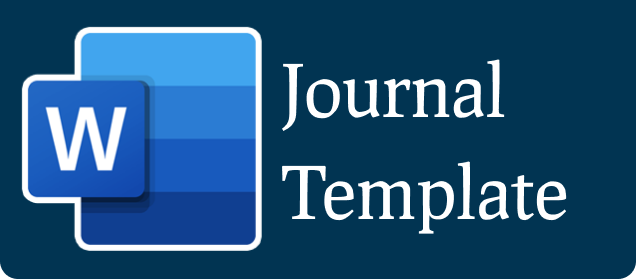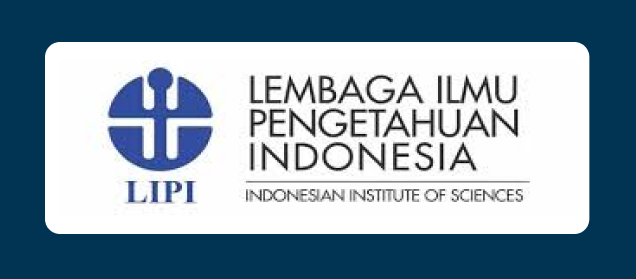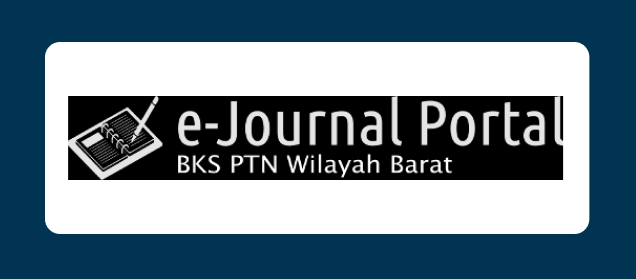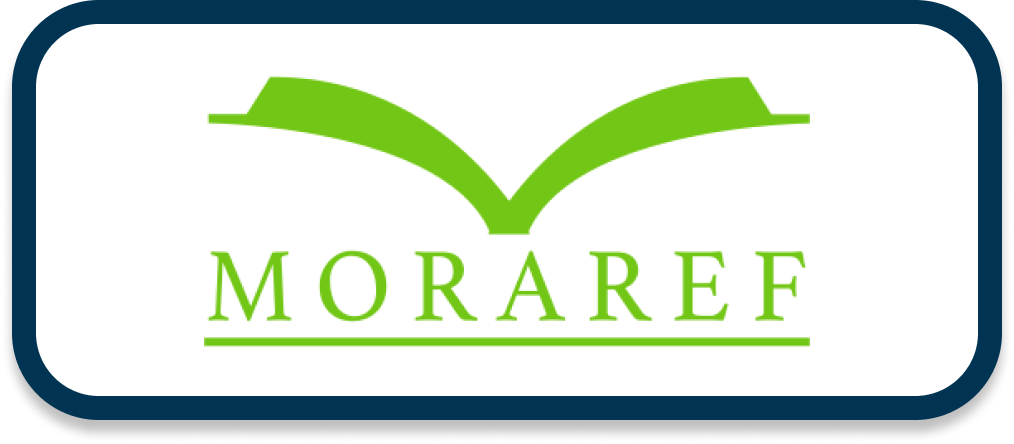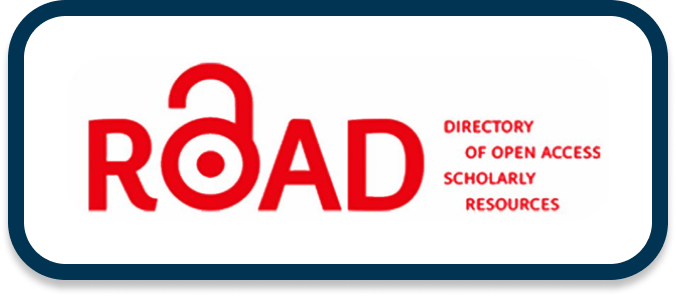- Focus and Scope
- Section Policies
- Peer Review Process
- Publication Frequency
- Open Access Policy
- Archiving
- OPEN ACCESS POLICY لســـانـنــا (LISANUNA): Jurnal Ilmu Bahasa Arab dan Pembelajarannya
- Author Guidelines لســـانـنــا (LISANUNA): Jurnal Ilmu Bahasa Arab dan Pembelajarannya
- Author Fee (Page Charge)
- Archiving
- Journal Partnership
- Publication Ethics
- REVIEWERS
Focus and Scope
The focus of the Lisanuna Journal is to provide an understanding of Arabic language learning that can be developed by instructors and consultants for learning Arabic education, both teachers, lecturers, and the general public as an appropriate reference material through the publication of articles, research reports and learning reviews and books. This Lisanuna Journal has coverage on the development of Arabic language education learning that can be developed in accordance with the conditions of Arabic language education in particular and the development of Arabic language education learning that is relevant in general. It is hoped that this coverage will be able to provide new insights and appropriate developments that can be applied directly by teachers and educators in Aceh.
الشروط العامة لنشر البحوث في مجلة "لساننا"
لتكون البحوث المقدمة مقبولة وصالحة للنشر في مجلة "لساننا" لابد من مراعاة الشروط الآتية:
1) أن يكون البحث مكتوبا باللغة العربية، اللغة الإندونيسية، اللغة الإنجليزية أو غيرها.
2) أن يتسم البحث بالأصالة والجدة، وأن تكون فيه إضافة للمعرفة.
3) وأن يدور البحث حول موضوعات ذات صلة بالدراسات اللغوية العربية وتعليم اللغة العربية.
4) ألا يكون البحث المقدم قد سبق له النشر في أية مجلة علمية أخرى جزئيا أو كليا.
5) وألا يتجاوز البحث ثلاثين صفحة وألا ينقص من خمسة عشر صفحة فيها المستخلص وقائمة المراجع.
6) وأن يكون البحث مكتوبا بنوع الخط للغة العربية (Tradtional Arabic) وحجم (16) بالنسبة لمتن البحث، والتباعد بين أسطر المتن (1) سم.
7) يرفق مع البحث مستخلص باللغة العربية أوالإندونيسية.
8) وألا تزيد مستخلص البحث عن (250-300) والكلمات المفتاحية عن 3-7 كلمة) وتغطي جميع عناصر رئيسية للموضوع.
9) وأن تكتب جميع المعلومات الخاصة بالهوامش. وتوضع الهوامش في أسفل الورقة بطريقة مرقمة متكررة في كل صفحة، وهو يخضع لمبادئ ترتيبية بحيث يجب وضع رقم أمام الفكرة المنقولة والمقتبسة ثم إعادة كتابة الرقم نفسه في الهامش.
10) وفي نهاية البحث يجب ذكر المراجع: مؤلفه، وعنوان الكتاب بلون الأسود، وبلد النشر، ودار النشر، وتاريخه.
11) تنشر البحث بعد عرضها على محكمين لتقييمه، وذلك لمعرفة الجودة والرداءة لقبوله أو رفضه.
12) وقد اتخذ القرار بأن يتم إصدار المجلة مرتين في سنة. والموعد النهائي لتقديم البحوث/ المقالات من 30 من مايو/ من نوفبر من كل عام.
13) تظهر نتيجة صلاحية البحث أو عدمها في مدة لا تتجاوز شهرين من تاريخ تسليمه لإدارة المجلة، وتفيد بأن البحث المرسل مقبول للنشر أو مرفوض من قبل هيئة التحرير للمجلة.
العنوان لإرسال البحوث ومخلصاتها بالبريد الإلكتروني:
lisanuna.pba@ar-raniry.ac.id
This journal encompasses original research articles, review articles, and short communications, including:
- Teaching Arabic as a Foreign Language
- Arabic Linguistic
- Arabic Literature
- Arabic History
- History of Arabic Education
- Strategy of Arabic Teaching
- Arabic Islamic Culture
- Media of Arabic Teaching
- Technology of Arabic Teaching
- Modern Standard Arabic
- Arabic Second Language Acquisition
Section Policies
Articles
Peer Review Process
لســـانـنــا (LISANUNA): Jurnal Ilmu Bahasa Arab dan Pembelajarannya uses a double-blind policy review, the initial authors and articles are not displayed until the articles are accepted for further review and publication. Each article sent will be evaluated on the basis of the following considerations:
- The results of scientific work are the work of the Original
- Conformity between methodologies and research topics
- Have a good analysis
- The ability to communicate with readers
- Based on the recommendations of the reviewer
- The normal time for screening and evaluation of manuscripts is four to six months from the date of receipt
- Articles submitted to Lisanuna: Jurnal Ilmu Bahasa Arab dan Pembelajarannya can use Indonesian, English, or Arabic. However, abstracts must be in Indonesian and English.
Editor of لســـانـنــا (LISANUNA): Jurnal Ilmu Bahasa Arab dan Pembelajarannya has the full right to decide whether the article is accepted or rejected
Publication Frequency
The Lisanuna Journal (Journal of Arabic Language and Learning Sciences) is a bi-annual scientific journal based on open-access (January-June and July-December) which contains works on the study of Arabic language sciences and Arabic language learning from various aspects. All of these works are of benefit to all readers, both from lecturers, students and all those who have an interest in Arabic.
Open Access Policy
This journal provides immediate open access to its content on the principle that making research freely available to the public supports a greater global exchange of knowledge.
Archiving
This journal utilizes the LOCKSS system to create a distributed archiving system among participating libraries and permits those libraries to create permanent archives of the journal for purposes of preservation and restoration. More...
OPEN ACCESS POLICY لســـانـنــا (LISANUNA): Jurnal Ilmu Bahasa Arab dan Pembelajarannya
This journal provides immediate open access to its content on the principle that making research freely available to the public supports a greater global exchange of knowledge.
This journal is open access journal which means that all content is freely available without charge to users or / institution. Users are allowed to read, download, copy, distribute, print, search, or link to full text articles in this journal without asking prior permission from the publisher or author. This is in accordance with Budapest Open Access Initiative
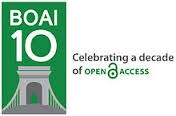
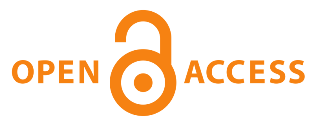
Budapest Open Access Initiative
For various reasons, this kind of free and unrestricted online availability, which we will call open access, has so far been limited to small portions of the journal literature. But even in these limited collections, many different initiatives have shown that open access is economically feasible, that it gives readers extraordinary power to find and make use of relevant literature, and that it gives authors and their works vast and measurable new visibility, readership, and impact. To secure these benefits for all, we call on all interested institutions and individuals to help open up access to the rest of this literature and remove the barriers, especially the price barriers, that stand in the way. The more who join the effort to advance this cause, the sooner we will all enjoy the benefits of open access.
The literature that should be freely accessible online is that which scholars give to the world without expectation of payment. Primarily, this category encompasses their peer-reviewed journal articles, but it also includes any unreviewed preprints that they might wish to put online for comment or to alert colleagues to important research findings. There are many degrees and kinds of wider and easier access to this literature. By "open access" to this literature, we mean its free availability on the public internet, permitting any users to read, download, copy, distribute, print, search, or link to the full texts of these articles, crawl them for indexing, pass them as data to software, or use them for any other lawful purpose, without financial, legal, or technical barriers other than those inseparable from gaining access to the internet itself. The only constraint on reproduction and distribution, and the only role for copyright in this domain, should be to give authors control over the integrity of their work and the right to be properly acknowledged and cited.
While the peer-reviewed journal literature should be accessible online without cost to readers, it is not costless to produce. However, experiments show that the overall costsof providing open access to this literature are far lower than the costs of traditional forms of dissemination. With such an opportunity to save money and expand the scope of dissemination at the same time, there is today a strong incentive for professional associations, universities, libraries, foundations, and others to embrace open access as a means of advancing their missions. Achieving open access will require new cost recovery models and financing mechanisms, but the significantly lower overall cost of dissemination is a reason to be confident that the goal is attainable and not merely preferable or utopian.
To achieve open access to scholarly journal literature, we recommend two complementary strategies.
I. Self-Archiving: First, scholars need the tools and assistance to deposit their refereed journal articles in open electronic archives, a practice commonly called, self-archiving. When these archives conform to standards created by the Open Archives Initiative, then search engines and other tools can treat the separate archives as one. Users then need not know which archives exist or where they are located in order to find and make use of their contents.
II. Open-access Journals: Second, scholars need the means to launch a new generation of journals committed to open access, and to help existing journals that elect to make the transition to open access. Because journal articles should be disseminated as widely as possible, these new journals will no longer invoke copyright to restrict access to and use of the material they publish. Instead they will use copyright and other tools to ensure permanent open access to all the articles they publish. Because price is a barrier to access, these new journals will not charge subscription or access fees, and will turn to other methods for covering their expenses. There are many alternative sources of funds for this purpose, including the foundations and governments that fund research, the universities and laboratories that employ researchers, endowments set up by discipline or institution, friends of the cause of open access, profits from the sale of add-ons to the basic texts, funds freed up by the demise or cancellation of journals charging traditional subscription or access fees, or even contributions from the researchers themselves. There is no need to favor one of these solutions over the others for all disciplines or nations, and no need to stop looking for other, creative alternatives.
Open access to peer-reviewed journal literature is the goal. Self-archiving (I.) and a new generation of open-access journals (II.) are the ways to attain this goal. They are not only direct and effective means to this end, they are within the reach of scholars themselves, immediately, and need not wait on changes brought about by markets or legislation. While we endorse the two strategies just outlined, we also encourage experimentation with further ways to make the transition from the present methods of dissemination to open access. Flexibility, experimentation, and adaptation to local circumstances are the best ways to assure that progress in diverse settings will be rapid, secure, and long-lived.
The Open Society Institute, the foundation network founded by philanthropist George Soros, is committed to providing initial help and funding to realize this goal. It will use its resources and influence to extend and promote institutional self-archiving, to launch new open-access journals, and to help an open-access journal system become economically self-sustaining. While the Open Society Institute's commitment and resources are substantial, this initiative is very much in need of other organizations to lend their effort and resources.
We invite governments, universities, libraries, journal editors, publishers, foundations, learned societies, professional associations, and individual scholars who share our vision to join us in the task of removing the barriers to open access and building a future in which research and education in every part of the world are that much more free to flourish.
September 12, 2012
Budapest, Hungary
- Sunil Abraham, Centre for Internet and Society in Bangalore
- Paul Ayris, University College London
- Lars Björnshauge, SPARC Europe
- Carl-Christian Buhr, Cabinet of Vice-President Neelie Kroes, European Commission
- Michael Carroll, American University Washington School of Law & Creative Commons
- Leslie Chan, Bioline International & University of Toronto Scarborough
- Tom Cochrane, Queensland University of Technology
- Darius Cuplinskas, Open Society Foundations
- Marin Dacos, CNRS, Center for Open Electronic Publishing, OpenEdition
- Marc Dupuis, SURF
- Kathleen Fitzpatrick, Modern Language Association
- Jean-Claude Guédon, Université de Montréal
- Melissa Hagemann, Open Society Foundations (remote participant)
- Stevan Harnad, Université du Québec à Montréal & University of Southampton
- Neil Jacobs, JISC (Joint Information Systems Committee)
- Heather Joseph, SPARC
- Robert Kiley, The Wellcome Trust
- Iryna Kuchma, EIFL (Electronic Information for Libraries)
- Cameron Neylon, PLOS (Public Library of Science)
- Mark Patterson, eLife
- David Prosser, Research Libraries UK (RLUK)
- István Rév, Open Society Archives & Open Society Foundations
- Eloy Rodrigues, University of Minho
- Bernard Schutz, Max Planck Society
- Stuart Shieber, Harvard University
- Peter Suber, Harvard Open Access Project & SPARC
- Caroline Sutton, Co-action Publishing and Open Access Scholarly Publishers Association (OASPA)
- Alma Swan, Key Perspectives Ltd & SPARC Europe
- Jan Velterop, Academic Concept Knowledge Limited
Author Guidelines لســـانـنــا (LISANUNA): Jurnal Ilmu Bahasa Arab dan Pembelajarannya
General Author Guidelines
All manuscripts must be submitted to LISANUNA Editorial Office by Online Submission at E-Journal portal address: [http://jurnal.ar-raniry.ac.id/index.php/lisanuna], where author register as Author and/or offered as Reviewer by online. If authors have any problems on the online submission, please contact Editorial Office at the following email: lisanuna.pba@ar-raniry.ac.id
Manuscript Template
Manuscript should be prepared according to the following author guidelines in the PDF article template:
Click Here in Bahasa
The article that will be submitted in this journal should contain:
- Information of article
Title: no more than 16 words; Author(s) name: is fully writen without any title; Institution: is completely stated, including the institution name; Corresponding author: includes name & email address
- Abstract
An abstract is a brief, comprehensive summary of the contents of the article; it allows readers to survey the contents of an article quickly and, like a title, it enables persons interested in the document to retrieve it from abstracting and indexing databases. Most scholarly journals require an abstract. Consult the instructions to authors or web page of the journal to which you plan to submit your article for any journal-specific instructions. A well-prepared abstract can be the most important single paragraph in an article. Most people have their first contact with an article by seeing just the abstract, usually in comparison with several other abstracts, as they are doing a literature search. Readers frequently decide on the basis of the abstract whether to read the entire article. The abstract needs to be dense with information. By embedding key words in your abstract, you enhance the user's ability to find it. Do not exceed the abstract word limit of the journal to which you are submitting your article. Word limits vary from journal to journal and typically range from 100 to 150 words.
Keywords: low case, comma, paper template, abstract, keywords, introduction
- Introduction
This template is designed to assist Author in preparing manuscript; it is an exact representation of the format expected by the editor. To use this template, please just Save As this MS Word file to your document, then copy and paste your document here. To copy and paste the text to this template document, please use Special Paste and choose Unformated Text.
All papers submitted to the journal should be written in good English. Authors for whom English is not their native language are encouraged to have their paper checked before submission for grammar and clarity. English language and copyediting services can be provided by: International Editing and Asia Editing. The work should not have been published or submitted for publication elsewhere. The official language of the manuscript to be published in LISANUNA journal is Indonesian, Arabic, and English.
In Introduction, Authors should state the objectives of the work at the end of introduction section. Before the objective, Authors should provide an adequate background, and very short literature survey in order to record the existing solutions/method, to show which is the best of previous researches, to show the main limitation of the previous researches, to show what do you hope to achieve (to solve the limitation), and to show the scientific merit or novelties of the paper. Avoid a detailed literature survey or a summary of the results.
- Method
Materials and methods should make readers be able to reproduce the experiment. Provide sufficient detail to allow the work to be reproduced. Methods already published should be indicated by a reference: only relevant modifications should be described. Do not repeat the details of established methods.
Identify Subsections
It is both conventional and expedient to divide the Method section into labeled subsections. These usually include a section with descriptions of the participants or subjects and a section describing the procedures used in the study. The latter section often includes description of (a) any experimental manipulations or inter-ventions used and how they were delivered-for example, any mechanical apparatus used to deliver them; (b) sampling procedures and sample size and precision; (c) measurement approaches (including the psychometric properties of the instruments used); and (d) the research design. If the design of the study is complex or the stimuli require detailed description, additional subsections or subheadings to divide the subsections may be warranted to help readers find specific information.
Include in these subsections the information essential to comprehend and replicate the study. Insufficient detail leaves the reader with questions; too much detail burdens the reader with irrelevant information. Consider using appendices and/or a supplemental website for more detailed information.
Participant (Subject) Characteristics
Appropriate identification of research participants is critical to the science and practice of psychology, particularly for generalizing the findings, making comparisons across replications, and using the evidence in research syntheses and secondary data analyses. If humans participated in the study, report the eligibility and exclusion criteria, including any restrictions based on demographic characteristics.
Research Design
Specify the research design in the Method section. Were subjects placed into conditions that were manipulated, or were they observed naturalistically? If multiple conditions were created, how were participants assigned to conditions, through random assignment or some other selection mechanism? Was the study conducted as a between-subjects or a within-subject design?
- Result and Discussion
Results should be clear and concise. The results should summarize (scientific) findings rather than providing data in great detail. Please highlight differences between your results or findings and the previous publications by other researchers.
The discussion should explore the significance of the results of the work, not repeat them. A combined Results and Discussion section is often appropriate. Avoid extensive citations and discussion of published literature.
In discussion, it is the most important section of your article. Here you get the chance to sell your data. Make the discussion corresponding to the results, but do not reiterate the results. Often should begin with a brief summary of the main scientific findings (not experimental results). The following components should be covered in discussion: How do your results relate to the original question or objectives outlined in the Introduction section (what)? Do you provide interpretation scientifically for each of your results or findings presented (why)? Are your results consistent with what other investigators have reported (what else)? Or are there any differences?
After presenting the results, you are in a position to evaluate and interpret their implications, especially with respect to your original hypotheses. Here you will examine, interpret, and qualify the results and draw inferences and conclusions from them. Emphasize any theoretical or practical consequences of the results. (When the discussion is relatively brief and straightforward, some authors prefer to combine it with the Results section, creating a section called Results and Discussion.)
Open the Discussion section with a clear statement of the support or nonsupport for your original hypotheses, distinguished by primary and secondary hypotheses. If hypotheses were not supported, offer post hoc explanations. Similarities and differences between your results and the work of others should be used to contextualize, confirm, and clarify your conclusions. Do not simply reformulate and repeat points already made; each new statement should contribute to your interpretation and to the reader's understanding of the problem.
Your interpretation of the results should take into account (a) sources of potential bias and other threats to internal validity, (b) the imprecision of measures, (c) the overall number of tests or overlap among tests, (d) the effect sizes observed, and (e) other limitations or weaknesses of the study. If an intervention is involved, discuss whether it was successful and the mechanism by which it was intended to work (causal pathways) and/or alternative mechanisms. Also, discuss barriers to implementing the intervention or manipulation as well as the fidelity with which the intervention or manip ulation was implemented in the study, that is, any differences between the manipulation as planned and as implemented.
Acknowledge the limitations of your research, and address alternative explanations of the results. Discuss the generalizability, or external validity, of the findings. This critical analysis should take into account differences between the target population and the accessed sample. For interventions, discuss characteristics that make them more or less applicable to circumstances not included in the study, how and what outcomes were measured (relative to other measures that might have been used), the length of time to measurement (between the end of the intervention and the measurement of outcomes), incentives, compliance rates, and specific settings involved in the study as well as other contextual issues.
End the Discussion section with a reasoned and justifiable commentary on the importance of your findings. This concluding section may be brief or extensive provided that it is tightly reasoned, self-contained, and not overstated. In this section, you might briefly return to a discussion of why the problem is important (as stated in the introduction); what larger issues, those that transcend the particulars of the subfield, might hinge on the findings; and what propositions are confirmed or disconfirmed by the extrapolation of these findings to such overarching issues.
- Conclusion
Conclusions should answer the objectives of research. Tells how your work advances the field from the present state of knowledge. Without clear Conclusions, reviewers and readers will find it difficult to judge the work, and whether or not it merits publication in the journal. Do not repeat the Abstract, or just list experimental results. Provide a clear scientific justification for your work, and indicate possible applications and extensions. You should also suggest future experiments and/or point out those that are underway.
- References
Izzan, Ahmad. 2007. Metodologi Pembelajaran Bahasa Arab. Bandung: Humaniora. Book
Albantani, Azkia Muharom. Ahmad Madkur. 2017. Musyahadat Al Fidyu: Youtube-Based Teaching and Learning of Arabic as Foreign Language (AFL), Dinamika Ilmu, Vol. 17, No. 2. Journal
al-Najran. Usman Abdullah dan Jasem Ali Jasem. 2013. Tahlil al-Akhtha al-Kitabiyah fi Badh al-Zawahir al-Nahwiyyah fi Kitabat al-Thullab Ghair al-Nathiqina al-Arabiyyah Prosiding Seminar International Bahasa Arab Khithab al-Tajdid fi al-Dirasat al-Arabiyyah Baina al-Nazariyah wa al-Tathbiq. Padang: UIN Imam Bonjol Padang Conference Proceeding.
Taufiqurrochman. 2015. "Busuu.com: Model Belajar Bahasa Arab Mandiri Berbasis Website, Laporan Penelitian UIN Maulana Malik Ibrahim Malang. Report
Al-Khalidi, Khalid Yunus. 1999. al-Yahud fi ad-Daulah al-Islamiyyah fi al-Andalus, disertasi pada Universitas Baghdad. Thesis
Busuu Developer. Manfaat busuu Premium, https://www.busuu.com/id, 25 Mei 2018. â†Website
Note:
- It is suggested the use of a reference manager, MENDELEY and ZOTERO.
- The article is research-based or thought-based in Arabic linguistics and Arabic teachings which is not published elsewhere either in print or online. The manuscript should be typed in Word document with Times New Arabic sized 12, 1.5 space, on A4 sized paper. Margin right-top-left-down 3 cm. The manuscript is 3000-7000 words in length.
Reviewing of manuscripts
Every submitted paper is independently reviewed by at least two peer-reviewers. Decision for publication, amendment, or rejection is based upon their reports/recommendation. If two or more reviewers consider a manuscript unsuitable for publication in this journal, a statement explaining the basis for the decision will be sent to the authors within three months of the submission date.
Revision of manuscripts
Manuscripts sent back to the authors for revision should be returned to the editor without delay. Revised manuscripts can be sent to editorial office through the Online Submission Interface [http://jurnal.ar-raniry.ac.id/index.php/lisanuna]. The revised manuscripts returned later than three months will be considered as new submissions.
Guideline for Online Submission
Author should fulfil the form as detail as possible where the star marked form must be entered. After all form textbox was filled, Author clicks on Register button to proceed the registration. Therefore, Author is brought to online author submission interface where Author should click on New Submission. In the Start a New Submission section, click on Click Here: to go to step one of the five-step submission processâ€. The following are five steps in online submission process:
- Step 1 - Starting the Submission: Select the appropriate section of journal, i.e. Original Research Articles, Review Article, or Short Communication. Thus, author must check-mark on the submission checklists.
- Step 2 - Uploading the Submission: To upload a manuscript to this journal, click Browse on the Upload submission file item and choose the manuscript document file to be submitted, then click Upload button.
- Step 3 - Entering Submission Metadata: In this step, detail authors metadata should be entered including marked corresponding author. After that, manuscript title and abstract must be uploaded by copying the text and paste in the textbox including keywords.
- Step 4 - Uploading Supplementary Files: Supplementary file should be uploaded including Covering/Submission Letter, and Signed Copyright Transfer Agreement Form. Therefore, click on Browse button, choose the files, and then click on Upload button.
- Step 5 - Confirming the Submission: Author should final check the uploaded manuscript documents in this step. To submit the manuscript to LISANUNA journal, click Finish Submission button after the documents is true. The corresponding author or the principal contact will receive an acknowledgement by email and will be able to view the submissions progress through the editorial process by logging in to the journal web address site.
After this submission, Authors who submit the manuscript will get a confirmation email about the submission. Therefore, Authors are able to track their submission status at anytime by logging in to the online submission interface. The submission tracking includes status of manuscript review and editorial process.
Author Fee (Page Charge)
لســانـنا (Lisanuna): Jurnal Ilmu Bahasa Arab Dan Pembelajarannya. Since manuscript submission year 2014, Authors should not pay some processing fees (Free Charges) for article processing and DOI maintenance once their articles has been accepted. And readers can read and download any full-text articles for free of charge.
User Rights
Authors who publish with this journal agree to the following terms with Creative Commons Attribution-ShareAlike (CC BY-SA) license
Attribution You must give appropriate credit, provide a link to the license, and indicate if changes were made. You may do so in any reasonable manner, but not in any way that suggests the licensor endorses you or your use.
ShareAlike If you remix, transform, or build upon the material, you must distribute your contributions under the same license as the original.
- No additional restrictions You may not apply legal terms or technological measures that legally restrict others from doing anything the license permits.
Author Fee (Page Charge)
لســانـنا (Lisanuna): Jurnal Ilmu Bahasa Arab Dan Pembelajarannya. Since manuscript submission year 2014, Authors should not pay some processing fees (Free Charges) for article processing and DOI maintenance once their articles has been accepted. And readers can read and download any full-text articles for free of charge.
Archiving
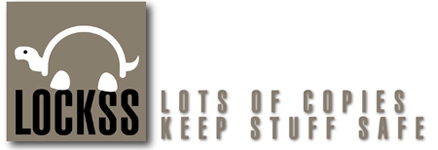
This journal utilizes the LOCKSS system to create a distributed archiving system among participating libraries and permits those libraries to create permanent archives of the journal for purposes of preservation and restoration. More...
Journal Partnership
IMLA (Association of Arabic Lecturers)
Ikatan Pengajar Bahasa Arab se-Indonesia
Click Here to Download MoU
Publication Ethics
The journal of Lisanuna is a peer-reviewed national journal, available in print and online and published twice a year (January-June and July-December). This statement clarifies the ethical behavior of all parties involved in the act of publishing an article in this journal, including the author, the chief editor, the Editorial Board, the peer-reviewer and the publisher. This statement is based on COPE & Best Practice Guidelines for Journal Editors.
Ethical Guideline for Journal Publication
The publication of an article in a peer-reviewed Journal of Lisanuna is an essential building block in the development of a coherent and respected network of knowledge. It is a direct reflection of the quality of the work of the authors and the institutions that support them. Peer-reviewed articles support and embody the scientific method. It is therefore important to agree upon standards of expected ethical behavior for all parties involved in the act of publishing: the author, the journal editor, the peer reviewer, the publisher, and the society.
Prodi Pendidikan Bahasa Arab Fakultas Tarbiyah dan Keguruan UIN Ar-Raniry as the publisher of the Journal of Lisanuna takes its duties of guardianship over all stages of publishing seriously and we recognize our ethical and other responsibilities. We are committed to ensuring that advertising, reprint or other commercial revenue has no impact or influence on editorial decisions. In addition, the Center for Research and Publication UIN Ar-Raniry of State Islamic University of Ar-Raniry and Editorial Board will assist in communications with other journals and/or publishers where this is useful and necessary.
Publication decisions
The editor of the Journal is responsible for deciding which of the articles submitted to the journal should be published. The validation of the work in question and its importance to researchers and readers must always drive such decisions. The editors may be guided by the policies of the journal Lisanuna editorial board and constrained by such legal requirements as shall then be in force regarding libel, copyright infringement and plagiarism. The editors may confer with other editors or reviewers in making this decision.
Fair play
An editor at any time evaluates manuscripts for their intellectual content without regard to race, Language Arabic, Education Arabic orientation, religious belief, Literature Arabic, ethnic origin, citizenship, or phonology of the authors.
Confidentiality
The editor and any editorial staff must not disclose any information about a submitted manuscript to anyone other than the corresponding author, reviewers, potential reviewers, other editorial advisers, and the publisher, as appropriate.
Disclosure and conflicts of interest
Unpublished materials disclosed in a submitted manuscript must not be used in an editor's own research without the express written consent of the author.
DUTIES OF REVIEWERS
Contribution to Editorial Decisions
Peer review assists the editor in making editorial decisions and through the editorial communications with the author may also assist the author in improving the paper.
Promptness
Any selected referee who feels unqualified to review the research reported in a manuscript or knows that its prompt review will be impossible should notify the editor and excuse himself from the review process.
Confidentiality
Any manuscripts received for review must be treated as confidential documents. They must not be shown to or discussed with others except as authorized by the editor.
Standards of Objectivity
Reviews should be conducted objectively. Personal criticism of the author is inappropriate. Referees should express their views clearly with supporting arguments.
Acknowledgment of Sources
Reviewers should identify relevant published work that has not been cited by the authors. Any statement that an observation, derivation, or argument had been previously reported should be accompanied by the relevant citation. A reviewer should also call to the editor's attention any substantial similarity or overlap between the manuscript under consideration and any other published paper of which they have personal knowledge.
Disclosure and Conflict of Interest
Privileged information or ideas obtained through peer review must be kept confidential and not used for personal advantage. Reviewers should not consider manuscripts in which they have conflicts of interest resulting from competitive, collaborative, or other relationships or connections with any of the authors, companies, or institutions connected to the papers.
DUTIES OF AUTHORS
Reporting standards
Authors of reports of original research should present an accurate account of the work performed as well as an objective discussion of its significance. Underlying data should be represented accurately in the paper. A paper should contain sufficient detail and references to permit others to replicate the work. Fraudulent or knowingly inaccurate statements are unacceptable and constitute unethical behavior.
Originality and Plagiarism
The authors should ensure that they have written entirely original works. If the authors have used the work and/or words of others, it must be appropriately cited or quoted.
Multiple, Redundant or Concurrent Publication
An author should not, in general, publish manuscripts describing essentially the same research in more than one journal or primary publication. Submitting the same manuscript to more than one journal concurrently constitutes unethical behavior and is unacceptable.
Acknowledgment of Sources
Proper acknowledgment of the work of others must always be given. Authors should cite publications that have been influential in determining the nature of the reported work.
Authorship of the Paper
Authorship should be limited to those who have made a significant contribution to the conception, design, execution, or interpretation of the reported study. All those who have made significant contributions should be listed as co-authors. Where there are others who have participated in certain substantive aspects of the research project, they should be acknowledged or listed as contributors. The corresponding author should ensure that all appropriate co-authors and no inappropriate co-authors are included on the paper and that all co-authors have seen and approved the final version of the paper and have agreed to its submission for publication.
Disclosure and Conflicts of Interest
All authors should disclose in their manuscript any financial or another substantive conflict of interest that might be construed to influence the results or interpretation of their manuscript. All sources of financial support for the project should be disclosed.
Fundamental errors in published works
When an author discovers a significant error or inaccuracy in his/her own published work, it is the author&viewers obligation to promptly notify the journal editor or publisher and cooperate with the editor to retract or correct the paper.
REVIEWERS
- lukman emha-, Universitas Islam Negeri Ar-Raniry, Indonesia
- anshar zulhelmi, UIN Ar-Raniry
- Dr Abdur-Rasheed Mahmoud-Mukadam, University of Ilorin, Ilorin, Nigeria
- Mr. Muhammad Yunus Anis, Prodi Sastra Arab. Fakultas Imu Budaya. Universitas Sebelas Maret., Indonesia
- Marzuki Abubakar, (Scopus ID: 58644004700) Ar-Raniry State Islamic University, Banda Aceh, Aceh, Indonesia
- Dr. Moch. Fajarul Falah, Universitas Islam Negeri Ar-Raniry, Banda Aceh, Indonesia
- mumtazul fikri, Universitas Islam Negeri (UIN) Ar-Raniry Banda Aceh, Indonesia
- Drs, MA Asyraf Muzaffar, Universitas Islam Negeri Ar-Raniry, Indonesia
- Ahmad Makky, North Sumatera State Islamic University, Indonesia
- Asyraf Isyraqi bin Jamil, Academy of Islamic Studies, University of Malaya, Malaysia
- Prof. Dr. Muhammad Madjid Ad-Dakhiel, M.Sc, Al-Balq'a Applied University Irbid University College, Jordan Ph.D In syntax and language. M.Sc. In syntax and language. B.Sc. In Arabic language., Jordan
- Eka Srimulyani (SCOPUS ID: 55659548600), Universitas Islam Negeri (UIN) Ar-Raniry, Indonesia
- Dr Muhibbuthabry Muhibbuthabry, UIN Ar-Raniry Banda Aceh, Indonesia
- Dr. Nurchalis Sofyan, Universitas Islam Negeri Ar-Raniry, Banda Aceh, Indonesia
- Dr. Salman Abdul Muthalib, Ar-Raniry State Islamic University, Banda Aceh, Aceh, Indonesia
- Prof., Dr. Amirul Hadi, (Scopus ID: https://goo.gl/My2FVY) Ar-Raniry State Islamic University, Banda Aceh, Aceh, Indonesia
- Dr. Khalid Khamis Musthafa Farraj, MA, مدرس قسم اللغة العربيّة- جامعة قطر, Qatar


